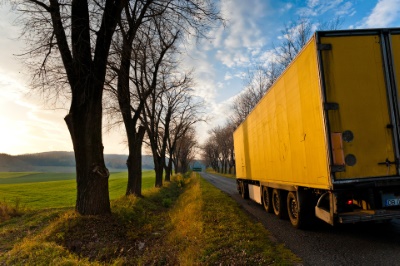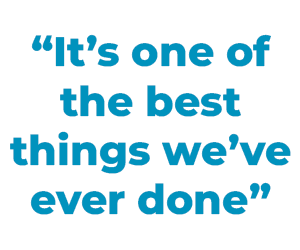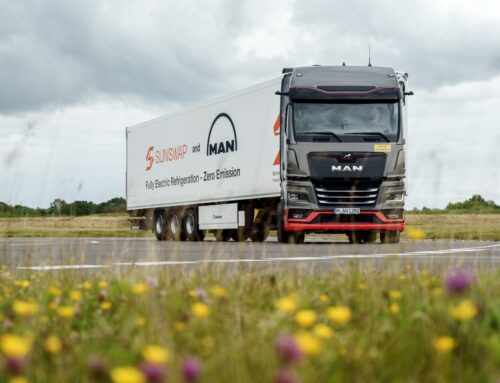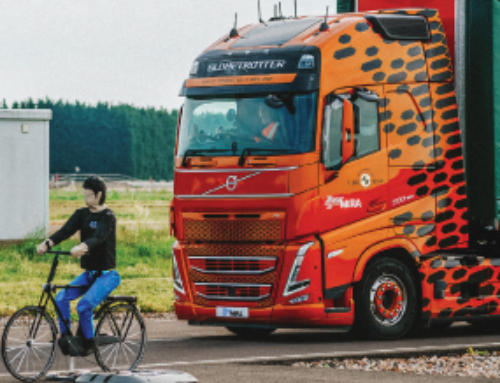Europe forges deal on heavy vehicle CO2 emissions
 Negotiators for the European Parliament and Council of the European Union, which comprises ministers from EU member states, have reached a provisional political agreement on the way forward for the reduction of carbon dioxide (CO2) emissions from new trucks, buses and trailers.
Negotiators for the European Parliament and Council of the European Union, which comprises ministers from EU member states, have reached a provisional political agreement on the way forward for the reduction of carbon dioxide (CO2) emissions from new trucks, buses and trailers.
The agreed package, which was announced in January, aims to encourage uptake of zero-emission vehicles across Europe in order to help meet EU climate ambitions.
The targets for CO2 reductions have been set at 45 per cent from 2030, 65 per cent from 2035 and 90 per cent from 2040, compared to 2019 levels. They will apply to heavy trucks over 7.5 tonnes, as well as coaches. A 100 per cent zero-emission target for urban buses by 2035 has also been included.
In addition, reduction targets of 7.5 per cent and 10 per cent have been set for trailers and semi-trailers respectively, while an official definition of ‘e-trailers’, which can contribute to the propulsion of a vehicle combination by recuperating energy, will also be adopted given their potential to contribute to CO2 emission reduction.
Exemptions from CO2 targets will apply to small-volume manufacturers’ vehicles, those for use by the armed forces and fire services; those for use in civil protection, medical care and public order; and vehicles used for mining, forestry and agriculture.
The agreement would also extend regulatory scope to vocational vehicles such as refuse trucks or concrete mixers from 2035, and the European Commission will analyse the possibility of bringing smaller lorries (under 5t) into scope.
Should the proposal be approved by relevant bodies, it will then need to be formally adopted by the relevant institutions before entering into force. The regulation would be subject to review in 2027.
In response, the European manufacturers’ association ACEA said that while truck and bus makers “fully support an ambitious decarbonisation agenda… the agreed implementation timeline remains extremely challenging in the absence of vital enabling conditions.”
“Electric charging and hydrogen refilling infrastructure, comprehensive carbon pricing schemes, and meaningful support measures for transport operators to invest quickly: these are the key ingredients for rapidly decarbonising the heavy-duty transport sector, in addition to zero-emission vehicles,” said Sigrid de Vries, ACEA director general.
“We cannot continue boldly setting ambitious targets for vehicle manufacturers and expect swift and smooth implementation to follow. Without an enabling framework to shore up demand for the zero-emission models, achieving targets will be impossible, especially with the envisaged timeline.”
To meet the 2030 targets, over 400,000 battery-electric and hydrogen-powered vehicles would need to be on the road, said ACEA, and at least a third of all new registrations zero-emission.
In addition, it said, at least 50,000 suitable charging stations would need to be deployed, mostly megawatt charging systems, as well as 700 hydrogen refilling stations.
“We are playing our part by investing and ramping up series production of zero-emission trucks and buses, but we rely on our customers’ ability to invest and operate new vehicles to replace older vehicles currently on Europe’s roads,” de Vries added.
However, ACEA said the European vehicle industry was “encouraged” by the decision to opt for the 2027 review date, earlier than originally proposed by the Commission.
“Moving forward, the European auto industry will continue to closely monitor the uptake of crucial enabling conditions to ensure targets are met,” said ACEA.
“The European Commission and member states must equally commit to monitoring progress to ensure expected shortcomings are addressed early to jointly deliver on the shared decarbonisation goal.”










